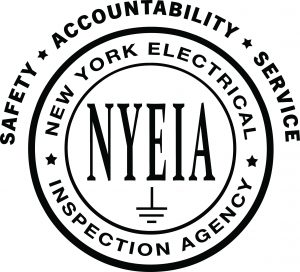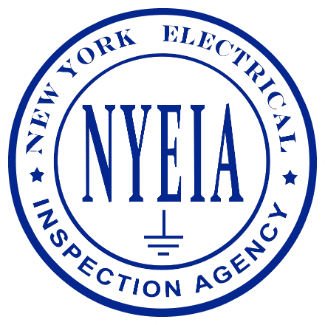Electrical inspectors are looking to ensure that existing as well as newly installed electrical components are safe, code compliant, and that the electrical components and wiring are being used properly and for their intended purpose. The two main types of electrical inspections are safety inspections and new installation inspections.
Electrical Safety Inspections: On an electrical safety inspection, the electrical inspector is making sure that the existing electrical components and wiring methods are safe and free of any visible defects no matter when it was installed. The existing wiring and components are visually inspected and verified to be intact and that the integrity of the said components has not been compromised and that the components are being used in a manner consistent with the National Electrical Code and its intended purpose. Over time, electrical components and wiring can breakdown and become unsafe due to improper installation or use, can become damaged from exposure to water or heat, subjected to excessive wear or physical damage, or it may be existing past its designed life expectancy. Any one of those situations can be extremely dangerous and may even lead to the property insurance carrier to void coverage should any damages or injuries be caused by these conditions. Deferred maintenance and improper maintenance of electrical components may be a fire hazard and may be considered negligence in the eyes of an insurance carrier and leave you uninsured and at risk personally.
An electrical safety inspection typically is completed in one trip. The accessible components in question are surveyed and assessed as to their overall general condition and safety and verified to the electrical inspector’s satisfaction that conditions are safe. These types of inspections are typically noninvasive, are thorough, and are done relatively quickly. If issues or concerns are found on the electrical safety inspection, you will be notified by the electrical inspector, repairs will need to be corrected, and a follow-up inspection will need to be performed. The follow-up inspection will be the same as the initial electrical safety inspection but will also include a new installation inspection on the wiring and/or components that were cited on the earlier inspection as needing to be repaired.
New Installation Inspections: New electrical installations are inspections of newly installed or repaired electrical components. Typically, with very few exceptions, all new electrical work requires a building permit from your local municipality and an inspection is required to be performed by an approved electrical inspector. On these inspections, electrical inspectors are verifying that the installation of the electrical components and wiring are compliant with the National Electrical Code, installed as per the manufactures and the listing requirements, and are being used as they were intended to be used. The National Electrical Code is amended and updated every three years and adopted at various times depending on your municipality. Usually, a municipality is one code cycle behind the newest code version due to lag times of governmental legislation. If you are unsure which version of the National Electrical Code your area is on, check with your municipality or your electrical inspector prior to beginning the work.
Conclusion: When preparing for an electrical inspection, you can make the inspection go smoother by following these basic tips: Be sure that the electrical inspector has a clear, safe, and accessible path to all of the electrical components being inspected, have a qualified person on site or be prepared to be able to open or remove any access panels or covering requested by the inspector, and have a written list for the inspector of all the components that were newly installed, repaired, or modified. The main objective of the electrical inspector is to ensure the safety of people and property. While the thought of having an electrical inspection may seem overwhelming, if you are prepared, it is actually a simple, quick, and painless process.

New York Electrical Inspection Agency
